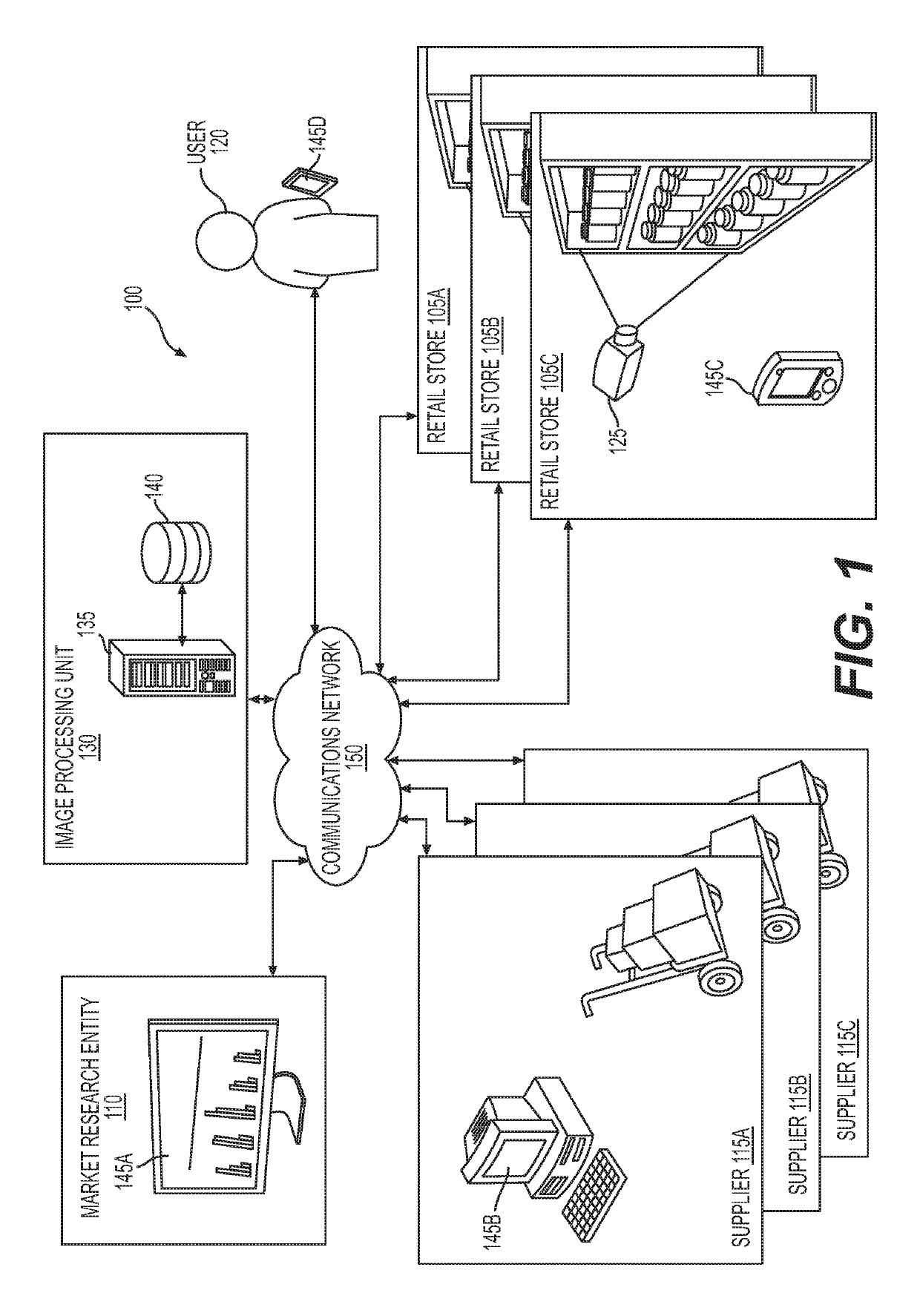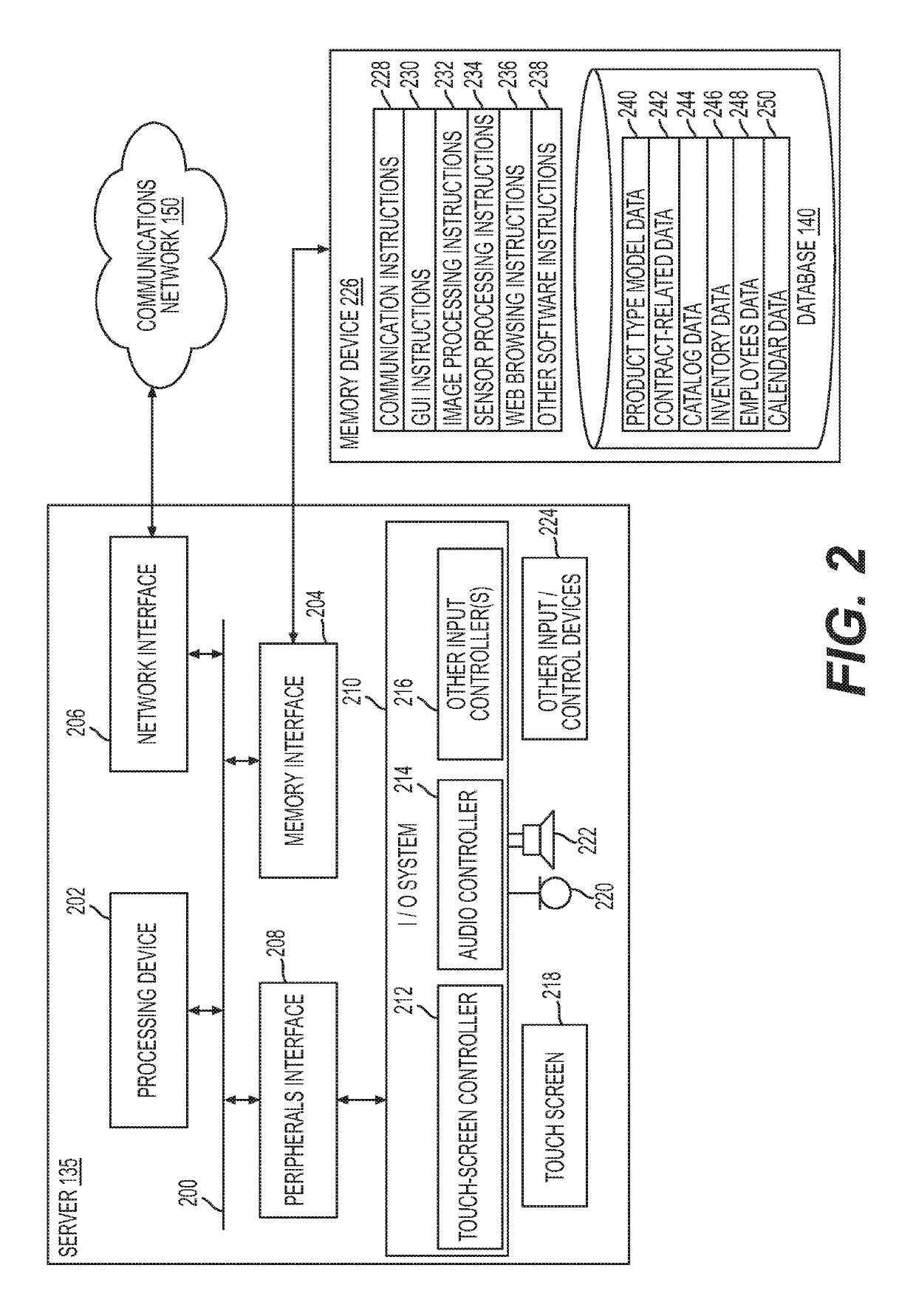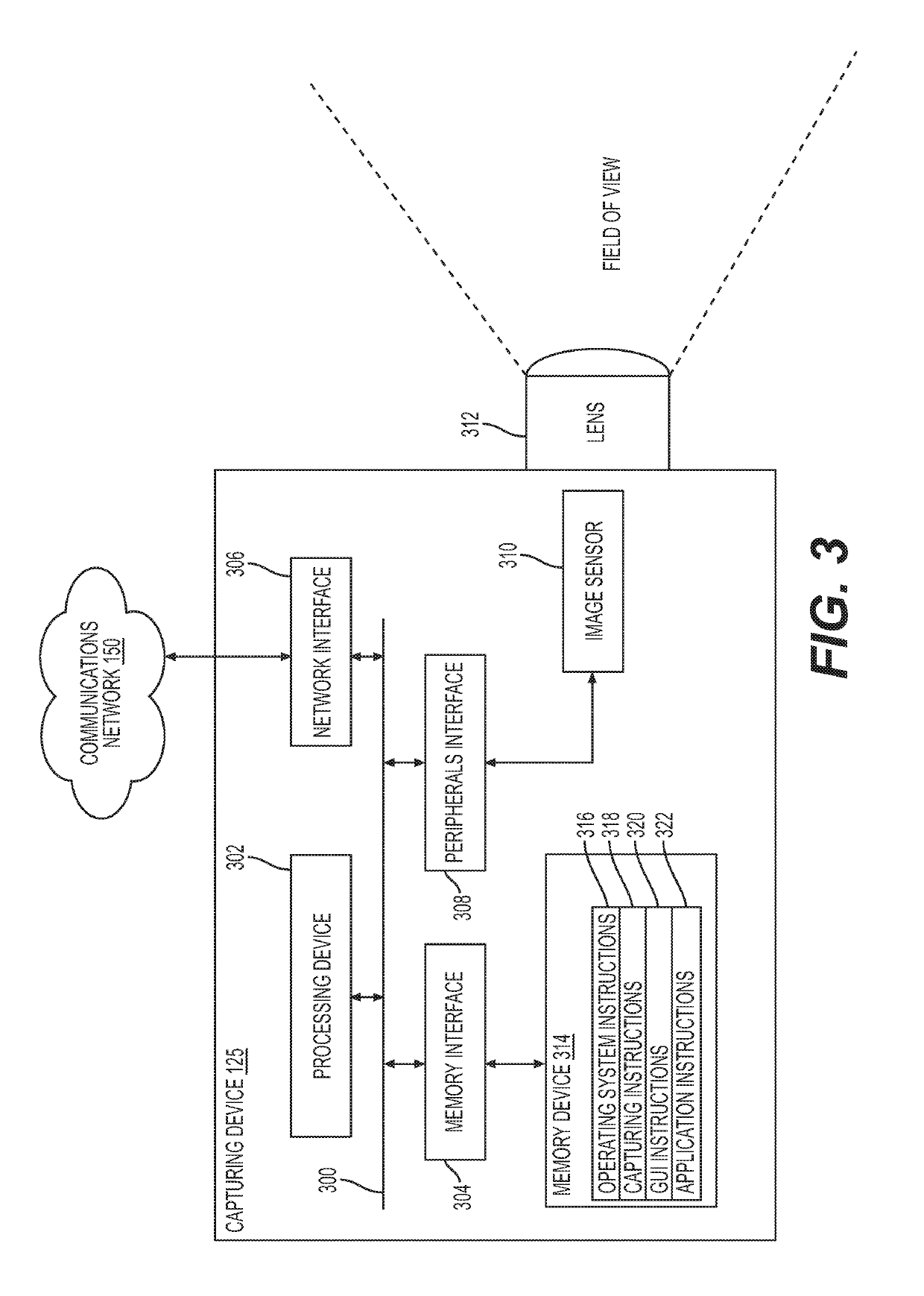Withholding alerts due to temporary shelf occlusion
a technology of temporary shelf occlusion and alerts, applied in still image data clustering/classification, image enhancement, instruments, etc., can solve the problems of significant compliance gaps and non-uniform compliance among retailers, and achieve the effect of increasing future sales
- Summary
- Abstract
- Description
- Claims
- Application Information
AI Technical Summary
Benefits of technology
Problems solved by technology
Method used
Image
Examples
first embodiment
[0147]With reference to FIG. 4B and consistent with the present disclosure, server 135 may receive image data captured by users 120. In a first embodiment, server 135 may receive image data acquired by store employees. In one implementation, a handheld device of a store employee (e.g., capturing device 125D) may display a real-time video stream captured by the image sensor of the handheld device. The real-time video stream may be augmented with markings identifying to the store employee an area-of-interest that needs manual capturing of images. One of the situations in which manual image capture may be desirable may occur where the area-of-interest is outside the fields of view of a plurality of cameras fixedly connected to store shelves in aisle 400. In other situations, manual capturing of images of an area-of-interest may be desirable when a current set of acquired images is out of date (e.g., obsolete in at least one respect) or of poor quality (e.g., lacking focus, obstacles, l...
second embodiment
[0148]In a second embodiment, server 135 may receive image data acquired by crowd sourcing. In one exemplary implementation, server 135 may provide a request to a detected mobile device for an updated image of the area-of-interest in aisle 400. The request may include an incentive (e.g., $2 discount) to user 120 for acquiring the image. In response to the request, user 120 may acquire and transmit an up-to-date image of the area-of-interest. After receiving the image from user 120, server 135 may transmit the accepted incentive or agreed upon reward to user 120. The incentive may comprise a text notification and a redeemable coupon. In some embodiments, the incentive may include a redeemable coupon for a product associated with the area-of-interest. Server 135 may generate image-related data based on aggregation of data from images received from crowd sourcing and from images received from a plurality of cameras fixedly connected to store shelves. Additional details of this embodime...
PUM
 Login to View More
Login to View More Abstract
Description
Claims
Application Information
 Login to View More
Login to View More - R&D
- Intellectual Property
- Life Sciences
- Materials
- Tech Scout
- Unparalleled Data Quality
- Higher Quality Content
- 60% Fewer Hallucinations
Browse by: Latest US Patents, China's latest patents, Technical Efficacy Thesaurus, Application Domain, Technology Topic, Popular Technical Reports.
© 2025 PatSnap. All rights reserved.Legal|Privacy policy|Modern Slavery Act Transparency Statement|Sitemap|About US| Contact US: help@patsnap.com



